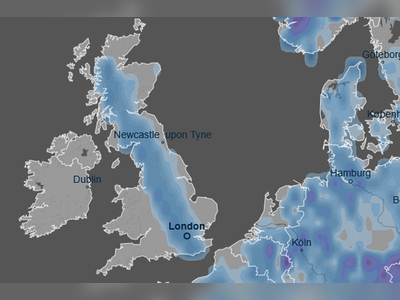
Concerns Mount Over Online Access to Violent Content Following UK Tragedy
Case highlights the growing prevalence of violent online material and the risks it poses, as authorities and experts urge for stronger regulation.
UK experts and officials are raising alarms over the widespread availability of violent content online following the case of 18-year-old Axel Rudakubana.
Rudakubana, who murdered three girls at a Southport dance class, had been found to have an extensive history of searching for and viewing extreme violent material online.
On the day of the attack, Rudakubana watched a video of a 2023 Sydney church attack just minutes before leaving his home.
His online activities also included research on genocides, graphic murder videos, and information related to school massacres in the United States.
Furthermore, police found documents concerning Nazi Germany and bomb-making instructions on his devices.
In response, UK Prime Minister Keir Starmer highlighted this incident as indicative of a new terror threat involving individuals accessing violent material online without a coherent ideology.
He called for an examination of how to protect children from violent content on social media platforms, which remains accessible with relative ease.
Recent findings by Ofcom, the UK's communications regulator, indicate a rising trend of internet users encountering content depicting or promoting violence.
In the latest research, 11% of users aged 18 and over had seen such material, compared to 9% a year prior.
Among younger users aged 13 to 17, 9% had encountered similar content.
Academics and experts, including Prof Sonia Livingstone from the London School of Economics, emphasize the easy access to such content and note an increased presence of research on how young men engage with harmful and hateful material.
Dr. Julia Ebner from the University of Oxford points to a trend of 'fluid ideologies' in radicalization cases, whereby individuals are exposed to varied online content reflective of multiple extremist perspectives.
Aside from the online dangers, Rudakubana's case demonstrated his use of digital tools to conceal his identity while purchasing weapons prior to his attack.
His actions bring to light the challenges authorities face in preventing attacks that are influenced by online radicalization.
In the wake of the attack, UK Home Secretary Yvette Cooper announced that the government would undertake measures to address rising youth violence and the impact of exposure to violent content online.
Requests have been made to technology companies to remove such content preemptively, preceding the implementation of the Online Safety Act.
The NSPCC and other child safety organizations have voiced concerns regarding the ease with which children can access these materials.
Harmful algorithms are cited as a key factor in perpetuating harmful content exposure, potentially impacting the wellbeing of young individuals.
Educational professionals and organizations are urging increased support and accountability from the government and social media companies to combat the normalization of violence among youth.
Measures to detect early signs of inappropriate behavior in schools and safeguard vulnerable users online are deemed essential to mitigate future risks.
Rudakubana, who murdered three girls at a Southport dance class, had been found to have an extensive history of searching for and viewing extreme violent material online.
On the day of the attack, Rudakubana watched a video of a 2023 Sydney church attack just minutes before leaving his home.
His online activities also included research on genocides, graphic murder videos, and information related to school massacres in the United States.
Furthermore, police found documents concerning Nazi Germany and bomb-making instructions on his devices.
In response, UK Prime Minister Keir Starmer highlighted this incident as indicative of a new terror threat involving individuals accessing violent material online without a coherent ideology.
He called for an examination of how to protect children from violent content on social media platforms, which remains accessible with relative ease.
Recent findings by Ofcom, the UK's communications regulator, indicate a rising trend of internet users encountering content depicting or promoting violence.
In the latest research, 11% of users aged 18 and over had seen such material, compared to 9% a year prior.
Among younger users aged 13 to 17, 9% had encountered similar content.
Academics and experts, including Prof Sonia Livingstone from the London School of Economics, emphasize the easy access to such content and note an increased presence of research on how young men engage with harmful and hateful material.
Dr. Julia Ebner from the University of Oxford points to a trend of 'fluid ideologies' in radicalization cases, whereby individuals are exposed to varied online content reflective of multiple extremist perspectives.
Aside from the online dangers, Rudakubana's case demonstrated his use of digital tools to conceal his identity while purchasing weapons prior to his attack.
His actions bring to light the challenges authorities face in preventing attacks that are influenced by online radicalization.
In the wake of the attack, UK Home Secretary Yvette Cooper announced that the government would undertake measures to address rising youth violence and the impact of exposure to violent content online.
Requests have been made to technology companies to remove such content preemptively, preceding the implementation of the Online Safety Act.
The NSPCC and other child safety organizations have voiced concerns regarding the ease with which children can access these materials.
Harmful algorithms are cited as a key factor in perpetuating harmful content exposure, potentially impacting the wellbeing of young individuals.
Educational professionals and organizations are urging increased support and accountability from the government and social media companies to combat the normalization of violence among youth.
Measures to detect early signs of inappropriate behavior in schools and safeguard vulnerable users online are deemed essential to mitigate future risks.










